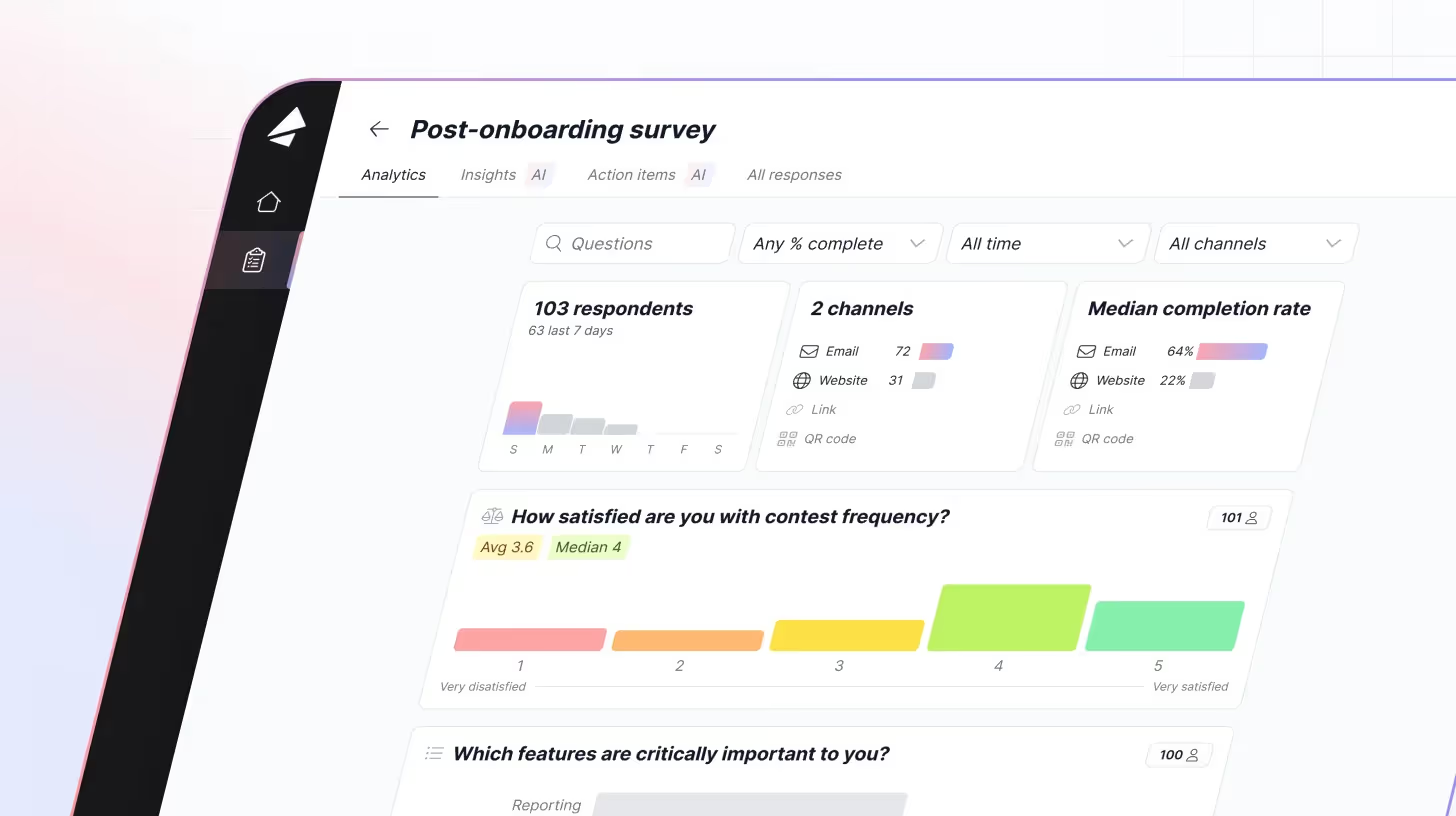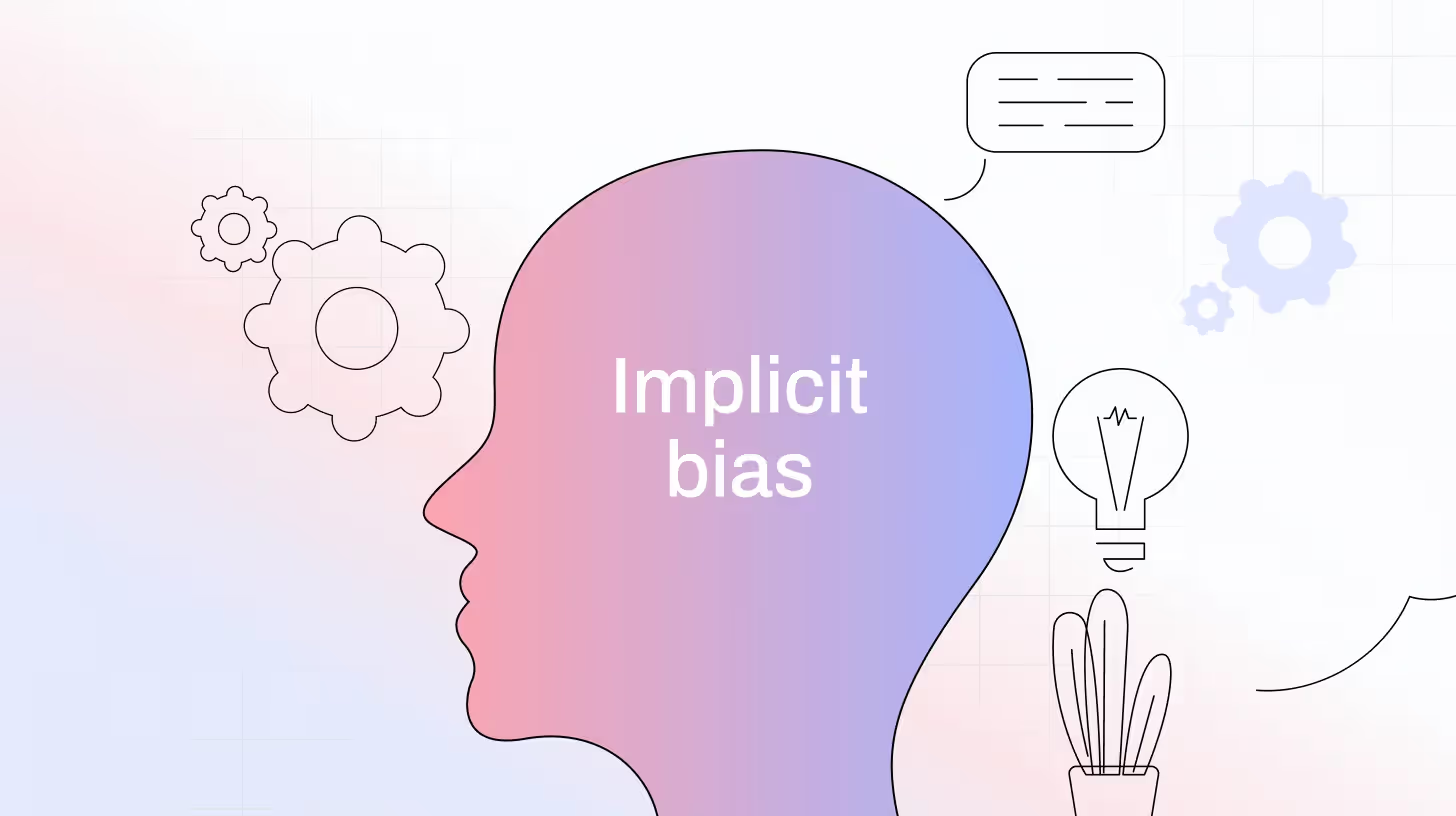AI Customer Insights: Driving 200% More Actionable Decisions

Imagine if your product team could read minds.
Not in a sci-fi sense, but through every customer’s email, survey, or Slack comment, which is instantly decoded into clarity. Sounds fun, right?
That’s what AI customer insights do. They transform scattered information into a real-time intelligence engine that uncovers what your customers feel, want, or expect long before they actually say it. It’s like reading intent, mood, and priorities all at once and using that to build products people truly love.
This blog is your guide to understanding how AI-driven customer insights work, why they matter, and how you can use them to make every customer conversation count.
TL;DR
- AI customer insights turn scattered feedback into real, actionable intelligence.
- They help you understand why customers act the way they do, not just what they do.
- Predict churn and spot at-risk customers before it affects your revenue.
- Make smarter product decisions by prioritizing features your customers actually care about.
- Identify upsell and cross-sell opportunities, boosting lifetime value and revenue.
- Automate analysis of feedback from emails, surveys, chats, and social channels, saving time and reducing manual work.
- Helps teams stay ahead of the competition by anticipating customer needs and trends.
- Tools like TheySaid turn hundreds of conversations into insights, improving sentiment, NRR, and decision-making fast.
- The AI insight pipeline: collect → organize → analyze → generate insights → act and predict.
- Every voice of the customer becomes a guide for growth, better experiences, and smarter business moves.
What are AI-powered Customer Insights?
AI customer insights are intelligent interpretations of customer behavior, preferences, and trends. Instead of relying on assumptions or fragmented reports, AI continuously analyzes large volumes of qualitative and quantitative data from every piece of customer feedback, such as reviews, surveys, support chats, and dashboards, to uncover the reasons behind customer choices.
Where traditional analytics focus on “what happened,” AI-powered insights reveal “why it happened and “what’s likely to happen next.”
Here’s how it typically works:
- NLP (Natural Language Processing) helps AI understand human language, identifying themes, tone, and sentiment behind customer messages.
- LLMs (Large Language Models) interpret context, summarize feedback, and generate actionable insights that humans can instantly understand.
Together, these technologies transform unstructured feedback into structured intelligence, the kind that helps product, customer success, and revenue teams make faster, smarter decisions.
Did you know?
The market for “AI in Customer Insights” was valued at USD 5.2 billion in 2024, and is projected to grow to ~USD 35.4 billion by 2033 (CAGR ~21.4 %). Source
The Technology Behind AI Customer Insights
Let’s break down what drives AI customer insights and how these technologies bring real business value:
Machine Learning (ML) - The Engine That Never Stops Learning
Machine learning acts as the engine that continuously refines itself with every new customer interaction. It detects behavioral patterns, predicts future actions, and adapts in real time. Whether it’s identifying users likely to churn or spotting upsell opportunities, ML makes customer insights smarter and faster with each cycle.
Natural Language Processing (NLP)- Understanding Human Language at Scale
Natural Language Processing (NLP) helps AI understand human language, not just the words, but the meaning behind them. It scans reviews, chat logs, and survey responses to pick up tone, emotion, and intent. So instead of getting lost in thousands of comments, your team sees a clear, organized snapshot of what customers really feel and say.
Predictive Analytics- Seeing the Future in Data
Predictive analytics shifts your team from reactive to proactive. By analyzing behavioral and historical data, it forecasts what’s likely to happen next, such as which customers are at risk or what product features might see a surge in demand.
Sentiment Analysis- Reading the Room (At Scale)
Sentiment analysis decodes the emotional context of feedback, identifying whether users are satisfied, frustrated, or disengaged. This helps teams prioritize fixes and opportunities based on emotional impact, not just volume.
Read: The Ultimate Guide to Sentiment Analysis: What It Is & Why It Matters
Data Integration & Visualization-Making Complexity Simple
These tools bring everything together, connecting data from your CRM, social channels, NPS surveys, and product analytics into one unified dashboard. The result? A clear, visual story of what customers think and how it affects business performance.
The Business Value of AI Customer Insights
When we talk about investing in AI customer insights, we’re not just discussing flashy tech; it’s about turning data into measurable business value. For Product, Customer Success, and Revenue teams in B2B SaaS firms, the story is clear: deeper insight leads to better decisions, which in turn lead to stronger outcomes. Below are the key value levers, with examples and references.
Improve Retention & Reduce Churn
One of the biggest wins of AI customer insights is its ability to predict risky spots before they hit. Instead of waiting for renewal numbers to fall, AI helps organizations see early warning signs and act fast.
For example, a major automotive electronics company collaborated with an AI vendor to create a dashboard that included sentiment analysis and churn prediction models. They reported a 15% increase in churn prediction accuracy. Source
In another case, a B2B SaaS case study noted a 20% reduction in churn when AI-driven segmentation and predictive behavior modelling were used. Source
These results translate directly into value: retaining customers costs less than acquiring new ones, and AI insight provides early warnings so you can deploy retention playbooks precisely.
Agile Product & Feature Decisions
With structured feedback and real-time insight from AI customer insight platforms, Product teams can make decisions based on why customers behave the way they do, not just what they’re doing.
After analyzing around 35,000 calls, British Airways found that 7 of their top 10 contact reasons were not as expected, leading to a shift in their roadmap focus. Source
In the media and information services sector, a corporation used a cloud-based customer insights platform to integrate disparate data and make business decisions. They described the data as "worth millions" once properly harnessed. Source
For B2B SaaS, this means the difference between launching features that produce real value vs. investing in items customers don’t care about.
Upsell / Cross-Sell & Revenue Growth
AI-powered customer insights also spot opportunities for expansion. They can flag accounts that are ready for more before your sales team even reaches out.
In one study, companies using AI-powered CRMs to personalize experiences saw about a 20% increase in repeat purchases and a 25% boost in customer lifetime value. Source
By turning voice, sentiment, and behavior patterns into clear signals, AI helps revenue teams stay ahead of the curve, not just react to it.
Efficiency & Cost Savings
Operational efficiency is often an under-celebrated benefit of AI insight. By automating analysis of unstructured feedback and routing insights where they matter, organisations reduce manual effort and reallocate resources.
In a white-paper, a telecom company implemented AI models for automatic call summarisation and topic extraction; they reported ~$5 million in savings and a 30% reduction in call operations. Source
Reduced time to insight means faster decisions, fewer resources spent on manual tagging or reporting, and more focus on action.
Competitive Differentiation & Strategic Agility
Today, being customer-centric isn’t a choice; it’s expected. But being intelligently customer-centric? That’s what sets leaders apart.
AI customer insights help businesses shift from reacting to what customers say to predicting what they’ll want next. They catch early signs of friction, uncover new opportunities, and spot emerging trends long before the competition notices.
A study in the e-commerce sector showed how powerful this can be; an AI-driven sentiment analytics model reached 89.7% accuracy, improving both engagement and operational efficiency. Source
In simple terms, companies using AI insights aren’t just listening, they’re anticipating.
That means faster product moves, tighter product-market fit, and steady, long-term growth.
Key Metrics to Track
When you implement AI for customer insights, here are the measurable outcomes you should monitor:
- Churn rate reduction (or improved prediction accuracy)
- Customer lifetime value uplift/repeat purchase rate
- Time-to-insight (how long from feedback collection to decision)
- Feature adoption rate (post-insight-driven changes)
- Cost savings via automation in feedback/analysis processes

How TheySaid Turned Insights Into Impact
Case: A B2B SaaS platform losing NRR momentum
Challenge: Renewals were slipping, and customer feedback felt scattered and unclear.
Solution: Using TheySaid’s AI interview tool, the company gathered hundreds of real customer conversations. NLP quickly flagged recurring friction points, mostly around integrations, while large language models (LLMs) grouped responses into clear, actionable themes for the product team.
Result: Within 90 days, the team rolled out targeted fixes. Customer sentiment scores climbed by 30%, and NRR bounced back.
That’s the power of AI customer insights, turning the voice of the customer into the voice of growth.
Also Read: A Step-by-Step Guide to Interviewing Churned Customers with AI

AI Customer Insights vs. Traditional Analytics
From Feedback to Foresight: The AI Insight Pipeline
Every company gathers customer feedback, but not every company knows what to do with it. The real challenge isn’t collecting opinions; it’s translating them into decisions that drive growth. That’s where AI-powered customer insights redefine the process, turning scattered feedback into foresight that fuels product strategy, retention, and revenue.
Here’s how it works:
Data Collection: Capturing Every Voice, Everywhere
Your customers are constantly talking through surveys, interviews, reviews, and support chats. TheySaid’s AI conversational feedback tool brings all these signals together in one place. This unified feedback view ensures no insight gets lost in silos; every opinion, sentiment, and suggestion becomes part of your customer intelligence system.
Data Processing: Turning Noise into Clarity
Raw feedback is messy. It’s full of different tones, lengths, and emotions. TheySaid’s AI cleans, structures, and categorizes qualitative data automatically using Natural Language Processing (NLP) to understand meaning, tone, and emotion behind every response. This transforms scattered input into well-organized insights you can trust.
Pattern Analysis: Finding What Actually Matters
With Machine Learning at its core, TheySaid identifies recurring themes such as which issues cause churn, which features delight users, and where expansion potential lies. Instead of relying on manual reading or spreadsheets, leaders can instantly see which conversations point to growth opportunities or risks.
Insight Generation: From Information to Impact
This is where the magic happens. TheySaid’s AI doesn’t just summarize feedback, it interprets it. It explains the why behind customer sentiment, reveals underlying motivations, and even recommends next steps. This gives revenue, product, and success teams the clarity they need to act fast and with confidence.
Foresight and Action: Turning Insight into Strategy
The final step is transformation, taking what AI uncovers and using it to shape business strategy. With TheySaid, teams can see how customer sentiment evolves across lifecycle stages, predict churn risks, or identify ready-to-upgrade accounts. It’s not just about listening anymore; it’s about anticipating.
Book a demo and discover how AI insights can drive your growth.
FAQs
Can AI help reduce churn?
Yes. AI can flag at-risk customers before they cancel, giving teams a chance to act early and retain revenue.
Will AI replace human decision-making?
Not at all. AI supports teams by summarizing insights and highlighting patterns. Humans still make strategic decisions, but faster and more informed.
Do I need technical expertise to use AI customer insights?
No. Modern platforms simplify the process, turning raw feedback into easy-to-understand insights that Product, Success, and Revenue teams can act on immediately.
Can AI identify upsell or expansion opportunities?
Absolutely. By analyzing sentiment, usage patterns, and engagement, AI highlights accounts ready for upgrades or additional services.
Why should my business invest in AI customer insights?
It turns scattered feedback into actionable foresight, improves retention, drives revenue growth, boosts efficiency, and gives you a competitive edge in anticipating customer needs.





.webp)









.svg)